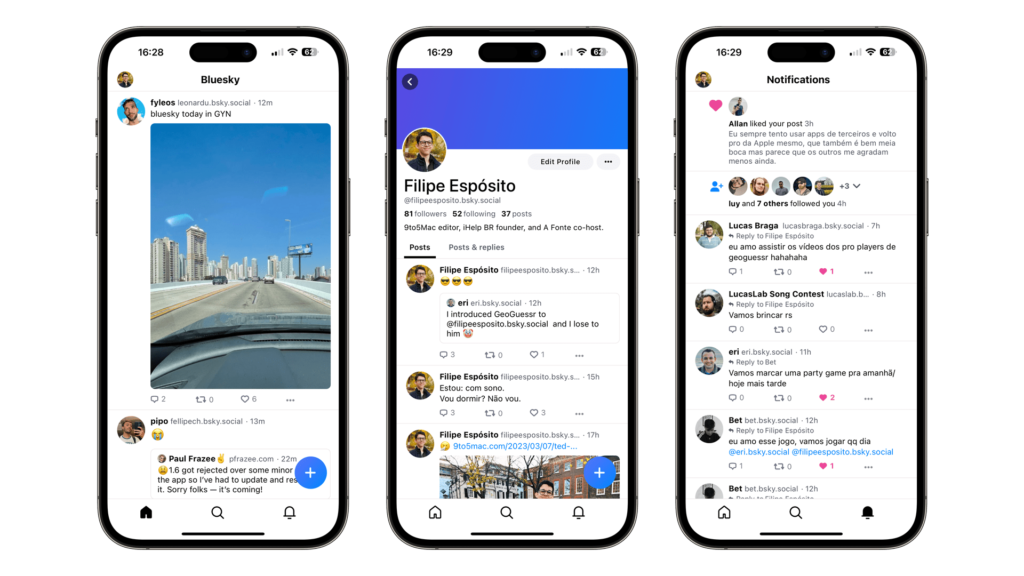X (formerly Twitter) has had a pretty tumultuous few years as social media platform, especially for nonprofits trying to connect with their audience to raise awareness. During a time when nonprofits budgets are tightening, and organic channels are more important than ever, where is the best social platform to post content? Maintaining a presence on a social media platform takes time and resources. Having to plan and post copy across the many social media channels available takes time, and having to vary your copy for each platform can take even longer. Being the right social channels is key to reaching your donors where they are most likely to be, and joining those conversations when possible to bring awareness to your cause.
Nonprofits can leverage social platforms such as BlueSky, Threads, Mastadon, and X to effectively connect with their donors by engaging with them in spaces where discussions about relevant causes are already happening. These platforms provide an opportunity to join conversations, share impactful stories, and build relationships with supporters who are passionate about their mission. By actively participating in these digital communities, nonprofits can enhance their visibility, foster a sense of community, and ultimately drive more support for their initiatives.
We’ve compiled a list of a few social media platforms similar to X where nonprofits can take their community engagement and growth strategies to the next level.
Alternative Social Media Platforms to X/Twitter
1. Bluesky Social

Bluesky, which originally began as an alternative to X (then Twitter) in October 2021, shows promise of becoming a burgeoning social platform. Like X, the platform allows users to create and join communities, follow other users, and engage in conversations, but with a focus on privacy and control over data.
As of June 2024, it is no longer invite-only, and organizations and users can join. Due to the fact it recently opened to general enrollment, Bluesky’s current user base is mostly composed of consumers and media outlets. Not many businesses or nonprofits have entered this space, which makes it completely uncharted territory as well as an exciting prospect to directly reach your audience. Many nonprofits have joined this space to claim their organization’s handles, but are not yet active on the platform.

In January 2025, BlueSky’s audience is currently 28 million users, and is the most downloaded free app on both the US and UK Apple Store. For nonprofits who are willing to enter a new space, Bluesky may be an effective way to promote meaningful content to relevant audiences.

Takeaways:
| Pros: – Interest in joining this platform as of January 2025 is high, with thousands joining daily. – The current audience is 28 million users. Making it the 3rd largest platform of this kind. – Extensive moderating, safety, and blocking options. | Cons: -The current audience is mostly people, and businesses and nonprofits have yet to engage in the space. This can also be seen as a potential pro, as organization competition is lower, and potential donors can be reached. – Not everyone has moved to this platform, and it may be hard to reach certain targets. |
2. Threads (part of Meta and Instagram)

The final option for consideration is Threads. Launched in July 2023, Threads was created by Meta, and can only accessed through an Instagram account. It’s designed to provide users with a decentralized and open-source experience, similar to the user experience of Instagram. Communication on this app prioritizes text-based posts, but images, videos and albums can be attached. It functions similarly to X, and posts look and feel similar to the comment section of Instagram, but are limited to 500 characters in length.
This platform boasts the largest audience, with 275 million users. This in part is due to the ease of creating an account through Instagram. With an audience practically built-in, this platform is conducive to winning over new supporters and advocates as they want a frictionless engagement experience. Although the audiences are there, this market is already competitive as many businesses already have an established Instagram business presence, and creating a Threads account is nearly seamless.
Takeaways:
| Pros: -The largest audience of users at 275 million. -Mostly used by users as an extension of Instagram. | Cons: -You must have an Instagram account to create a Threads account. -Competitive market, many organizations already have an account. |
3. Mastodon

One of the options of where users who have departed from X/Twitter are flocking to is Mastodon. Mastodon launched in 2016, and based aspects of some of its user experience on X (then Twitter). You can publish, like, and share posts and follow different users. But Mastodon is different because it is designed for creating and/or joining servers. This alleviates endless scrolling because content feeds, as they have a finite beginning and end. One of the downsides of this server model is that reaching the right audience can be difficult with so many silos.
The key consideration when choosing a social platform is audience size. Mastodon saw a huge spike in users in late October 2022, with 2 million users joining the following month. Today, they boast 9 million users, however, active users typically average out around 1 million users a day.

For nonprofits trying to maximize their reach vs time spent preparing and posting content, Mastodon may not be the best choice. However, in terms of engagement with audiences, due to the niche nature of servers, their audience is more likely to engage with posted content.
Takeaways:
| Pros: – Similar formatting of copy to X. – “Servers” can be hyper-focused and unique. – Users tend to be more engaged. | Cons: – Users must curate their “server” to see content, which can be difficult to reach to the correct audience as an organization. – Smallest platform, and current user numbers remain plateaued. |
Conclusion
Regardless of which platform you choose, the most important takeaway is to go where your audience is. By posting to the most effective platform, organizations are on the ground building community and raising awareness for extremely important issues. Utilizing these platforms can help you raise more money and win more campaigns as you find creative ways to work them into your 2025 digital marketing strategy.
It’s not necessary to do a total migration to one of these platforms, but utilizing a new platform can be an opportunity to still reach audiences as they move across new social media platforms. One consideration to remember is that if you use a third party tool to post your social content in advance, such as HubSpot or HootSuite, neither of these tools have native support for any of these platforms at the time of this publishing.
Social media is only one important tool to reaching your donor audiences. By leveraging a full range of tools, from audience targeting and segmentation, to email marketing, and personalization of copy, you can get the greatest return on your investment and time. Platforms like Engaging Networks can help you diversity your communication channels and methods. Drop us a line and we’ll reach out to discuss your needs.